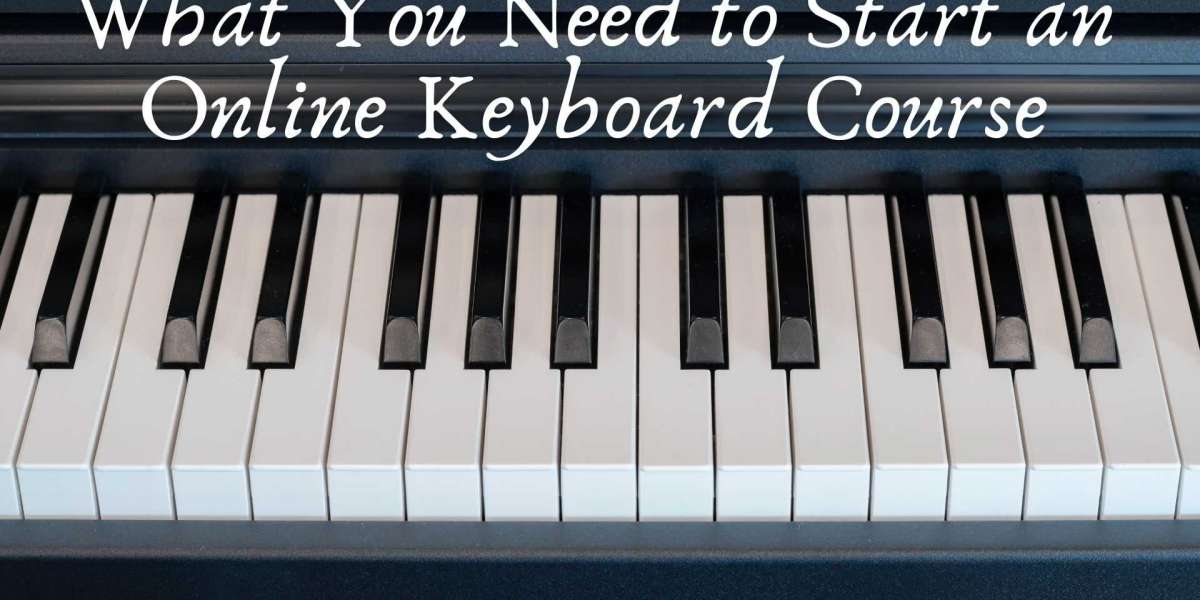Learning to play the keyboard online has never been easier, thanks to the abundance of digital tools and resources available today. Whether you're an aspiring musician or a seasoned player looking to refine your skills, starting an online keyboard course requires a combination of essential equipment, software, and structured learning. This article will guide you through everything you need to launch your journey successfully.
Essential Equipment
Digital Keyboard or MIDI Controller
To start an online keyboard course, you'll need an instrument to practice on. You have two main options:
- Digital Keyboard: A standalone keyboard with built-in sounds and speakers.
- MIDI Controller: Requires connection to a computer or mobile device to produce sound using software.
When selecting a keyboard, consider:
- Number of Keys: A full-sized keyboard has 88 keys, but 61 or 76 keys can be sufficient for beginners.
- Touch Sensitivity: Allows for dynamic playing, which is important for expression.
- Connectivity: USB or MIDI connections for seamless integration with online lessons and software.
Computer, Tablet, or Smartphone
An internet-enabled device is essential for accessing course materials, watching tutorials, and engaging in live lessons. A laptop or tablet with a good display and audio output is ideal.
Reliable Internet Connection
A stable and fast internet connection ensures smooth streaming of lessons and minimizes lag during live sessions.
Headphones or External Speakers
For a focused learning experience, invest in a pair of quality headphones or external speakers. This helps you hear nuances in sound and practice without disturbing others.
Sustain Pedal (Optional)
A sustain pedal enhances playability, allowing notes to be sustained longer. While not mandatory for beginners, it becomes useful as you progress.
Software and Learning Platforms
Online Learning Platforms
There are numerous platforms offering structured keyboard courses. Some popular ones include:
- Udemy: Offers comprehensive courses with lifetime access.
- Yousician: An interactive app that provides real-time feedback.
- Simply Piano: Ideal for beginners with step-by-step guidance.
- Pianu: Browser-based lessons for interactive learning.
- Flowkey: Works with real-time piano recognition.
Digital Audio Workstations (DAWs)
For students interested in music production, a DAW allows recording and editing keyboard performances. Some beginner-friendly DAWs include:
- GarageBand (Mac/iOS)
- FL Studio
- Ableton Live
- Reaper
Sheet Music and Notation Software
- Musescore: Free software for learning and creating sheet music.
- Noteflight: A web-based notation tool for composing and practicing.
Choosing the Right Course
Define Your Goals
- Do you want to learn classical piano, pop music, or electronic keyboard techniques?
- Are you aiming for structured lessons or a more self-paced approach?
- Do you prefer pre-recorded lessons or live instruction?
Beginner, Intermediate, or Advanced Courses
- Beginner Courses: Focus on hand positioning, simple chords, and reading music.
- Intermediate Courses: Introduce complex chords, scales, and playing techniques.
- Advanced Courses: Cover improvisation, music theory, and composition.
Free vs. Paid Courses
- Free Courses: Ideal for testing the waters; often found on YouTube or platforms like Coursera.
- Paid Courses: Provide structured learning with certifications, one-on-one mentorship, and advanced materials.
Practice Routine and Commitment
Set a Schedule
Consistency is key to progress. Allocate at least 30–60 minutes per day to practice.
Track Your Progress
Keep a practice journal or use apps like Piano Marvel to monitor your improvement.
Join Online Communities
Engaging with online forums, social media groups, or virtual piano meetups can provide motivation and additional resources.
Optional Enhancements
Virtual Lessons with a Tutor
For personalized feedback, consider hiring an online tutor via platforms like TakeLessons or Lessonface.
Music Theory Apps
Enhance your theoretical knowledge with apps like Tenuto, Perfect Ear, or EarMaster.
Conclusion
Starting an online keyboard course requires some initial investment in equipment and resources, but with the right setup and dedication, you can learn and master the keyboard at your own pace. By selecting the right course, practicing regularly, and using the available digital tools, you’ll be well on your way to becoming a skilled keyboardist. Happy playing!



